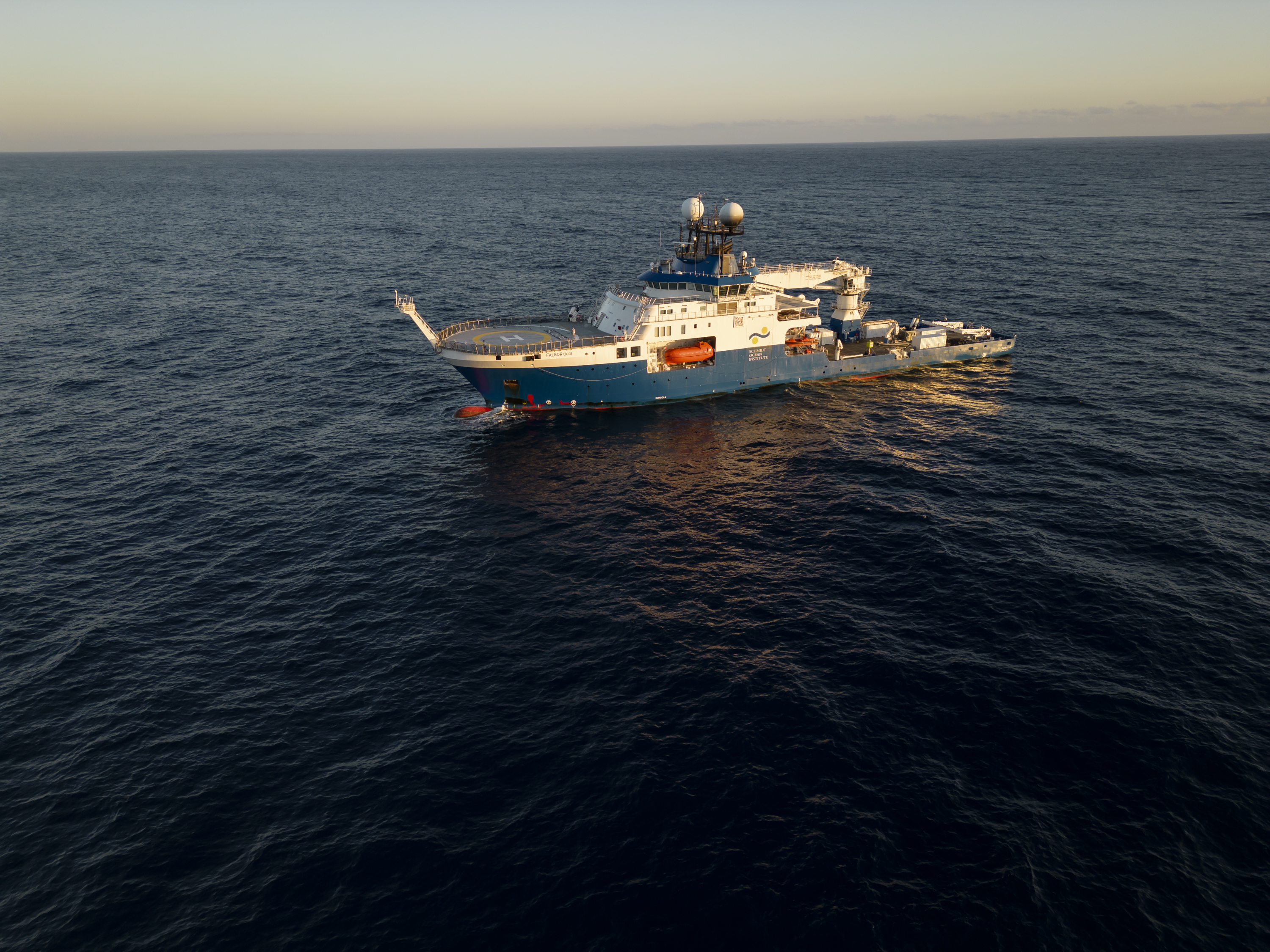Scientists discover 4 new species of deep-sea octopus
PUNTARENAS, Costa Rica—Scientists aboard Schmidt Ocean Institute’s R/V Falkor have discovered at least four new deep-sea octopus species in a 100-square-mile-sized area off Costa Rica.
The international science team discovered the new species during two 2023 expeditions examining seamounts off the Pacific coast of Costa Rica. The team found two octopus nurseries affiliated with hydrothermal springs during their first expedition in June. Six months later, scientists returned to the nurseries and confirmed they appear to be active year-round. They also observed several other new octopus species away from the hydrothermal springs.
Both expeditions were led by Drs. Beth Orcutt of the Bigelow Laboratory for Ocean Sciences and Jorge Cortés of the University of Costa Rica. The four species were identified and are currently being described by Dr. Janet Voight, associate curator of invertebrate zoology from the Field Museum of Natural History, and Fiorella Vasquez from the Zoological Museum at the University of Costa Rica.
One of the new octopuses is a new species of Muusoctopus and will be named Dorado Octopus after the initial location of discovery, a small outcrop of rock unofficially called El Dorado Hill. It is a related but distinct species from the Pearl Octopus found at Davidson Seamount in California in 2018, the site of another deep-sea octopus nursery. Of the four new Costa Rica species, only the Dorado octopus was observed brooding their eggs at hydrothermal springs. The discovery adds to evidence that the Muusoctopus genus has evolved to brood their eggs in warm springs on the seafloor.
“Through hard work, our team discovered new hydrothermal springs offshore Costa Rica and confirmed that they host nurseries of deep-sea octopus and unique biodiversity,” said Orcutt. “It was less than a decade ago that low-temperature hydrothermal venting was confirmed on ancient volcanoes away from mid-ocean ridges
These sites are significantly difficult to find since you cannot detect their signatures in the water column.”
Over 160 deep-sea animal specimens collected from the December expedition will be archived at the Museum of Zoology at the University of Costa Rica, adding to the 150 specimens collected in June. This marks one of the first times that all biological specimens will be housed within the Latin American country from which they were acquired following a deep-sea expedition, rather than being sent to the United States or Europe. Housing the collection in Costa Rica enables local scientists and students to easily access samples for research, with the potential to inform regional management strategies for the deep sea.
“The impact of the R/V Falkor expeditions on understanding the deep Pacific waters of Costa Rica will last into the future and hopefully create awareness that evolves into policies to protect the deep sea of the country,” said Cortés, “I hope that the expedition serves as an inspiration for new generations. We need more international collaborations to advance knowledge of our deep-sea heritage.”
Several other discoveries came from the expeditions. The science team found a thriving deep-sea skate nursery at the top of another seamount in Costa Rican waters, nicknaming the site Skate Park. The team also located three hydrothermal springs in the region, 10 to 30 nautical miles from each other. The springs all have different fluid temperatures and chemistries from one another, indicating unique reaction processes are facilitating their formation.
“Schmidt Ocean Institute supports the global scientific community wherever Falkor is operating,” said Schmidt Ocean Institute’s executive director, Dr. Jyotika Virmani, “Drs. Cortés and Orcutt formed a team that truly exemplifies international collaboration which empowers scientists within Costa Rica and enriches local knowledge and understanding of the ocean. In 2024, we will be operating in waters off Peru and Chile and look forward to welcoming scientists from South America on board.”
About the organizations
Schmidt Ocean Institute was established in 2009 by Eric and Wendy Schmidt to catalyze the discoveries needed to understand our ocean, sustain life, and ensure the health of our planet through the pursuit of impactful scientific research and intelligent observation, technological advancement, open sharing of information, and public engagement, all at the highest levels of international excellence.
For more information, visit www.schmidtocean.org.
Bigelow Laboratory for Ocean Sciences is an independent, nonprofit research institute located in East Boothbay, Maine. From the Arctic to the Antarctic, Bigelow Laboratory scientists use innovative approaches to study the foundation of global ocean health and unlock its potential to improve the future for all life on our planet. For more information, visit https://www.bigelow.org/about/.
The University of Costa Rica is a higher education institution championing humanist teaching. On March 12, 2001, the deputies of the Legislative Assembly, taking into account the contribution of the UCR to the country, declared it a Meritorious Institution of Costa Rican Education and Culture through Law No. 8098. Since its constitution in 1940, this Institution has enjoyed University Autonomy. For more information, visit https://www.ucr.ac.cr/.
Chicago’s Field Museum connects all to the natural world and the human story. The nearly 40 million specimens and artifacts in its collection are just the beginning of its quest to learn as much as it can about this incredible planet. Its more than 150 scientists and researchers travel to the far corners of the world in search of new discoveries and clues to what life was like hundreds, thousands, and millions of years ago. Every day it finds new evidence of just how interconnected the world is, and it’s working to build stronger communities to help preserve the planet for all the diverse life that makes Earth home. It asks big questions, publish groundbreaking research for the scientific community, and craft exhibitions to capture the imagination of a public who shares its passion for science that is just plain fun. Science is for everyone. And Chicago’s Field Museum can’t wait to share it with everyone. (PR)

A mother octopus broods her eggs near a small outcrop of rock unofficially called El Dorado Hill. When a female octopus broods (which can be a timespan of multiple years), she does not eat and dies around the same time her eggs hatch.
-SCHMIDT OCEAN INSTITUTE

Brooding mother octopuses often curl themselves up with tentacles and suckers facing out. Researchers believe this to be a defensive position, warning predators off.
-SCHMIDT OCEAN INSTITUTE

Research Vessel Falkor in the Pacific Ocean during the “Octopus Odyssey (too)” expedition off Costa Rica.
-SCHMIDT OCEAN INSTITUTE

This sighting of glass octopus (Vitreledonella richardi) was unusual—researchers are not sure if it is an act of predation or copulation, as it appears to be multiple octopuses intertwined. Glass octopus are nearly completely see-through, excellent camouflage that allows them an advantage against both predators and prey.
-SCHMIDT OCEAN INSTITUTE

Researcher Fiorella Vasquez (University of Costa Rica) processes a deep-sea octopus sample in the main laboratory during the “Octopus Odyssey (too)” expedition off Costa Rica.
-SCHMIDT OCEAN INSTITUTE






